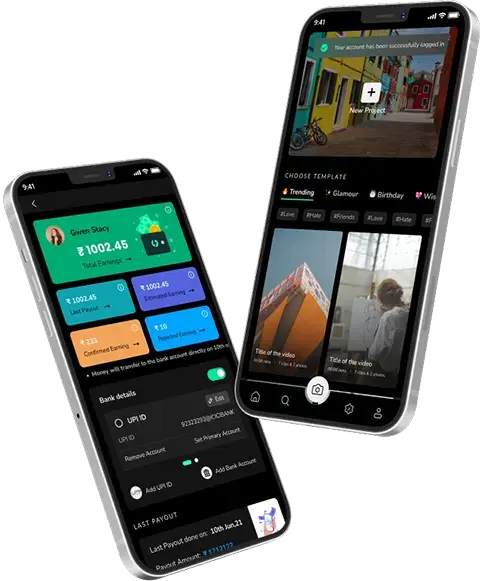Distributed Ledger Technology (DLT) can be envisioned as a detailed record of a patient in a large hospital system.
To kick off, every department has a copy of contemporary patient health records in medical software. When a doctor in cardiology records a new treatment or medication, that information is updated and synchronized to any department, including neurology and orthopaedics.
Also read – DICOM Medical Imaging Software Development: Factors & Financial Considerations
This means that any surgeon or doctor who ends up having to treat the patient obtains a complete and updated file on the patient’s medical history improving the coordinated care given to the patient and also enhancing the overall efficiency of the health establishment.

DLT therefore carries this policy of record-keeping in a widespread network. It is a record that is not located but distributed in various nodes or points where participants of the network are found. No single entity is in control or has exclusive rights to the records; everyone has a copy of all transactions and all the records with a relatively high level of security.
The Principle of Decentralization in DLT

Subsidiarity is a key characteristic of Distributed Ledger Technology or DLT, and this correlates with various departments’ responsibility in a hospital network regarding a patient’s care. In such a system, there isn’t a single party that controls all the data of the end users/ patients; likewise in DLT, every node has a copy of the ledger which doesn’t require the presence of the central authoritative version.
Thus, DLT, to which blockchain as an example belongs, works according to this distributed structure.
Here, the verification and recording of transactions are done by each node, like how some departments in a hospital management, record management and update their patients’ data on their own.
This architecture redesigns the way of accumulating and distributing information. The main point is that each time people start staking, buying, or selling, this action is shared with everyone in the network.
The nodes, based on a consensual algorithm, must then attempt to check and update their ledger to the novelty of the transaction. Symbol assurances are similar to verified credentials in medical records because the information cannot be changed without the recipient’s knowledge due to the existence of cryptographic symbols.
DLT, impromptu its most famous subclass, blockchain, provides a solid and secure structure to record details that cannot be altered and are entirely transparent.
The said innovative ledger is essential for not only the financial processes but also for such spheres that can use the concept of decentralised recording – for example, the sphere of healthcare software where record purity is a vital aspect.
The Essential Role of Distributed Ledger Technology (DLT) in Modern App Development

Distributed Ledger Technology (DLT), such as blockchain, is becoming increasingly important in app development for several reasons: Distributed Ledger Technology (DLT) and Latest Technology, such as blockchain, is becoming increasingly important in app development for several reasons:
1. Enhanced Security: It is seen that DLT gives a higher level of security not only because of its distributed ledger. To ensure data integrity, information is encrypted and spread out into many nodes and hence it is almost impossible to manipulate the data.
2. Transparency and Trust: In practice, each operation, or modification in data, is entered on a ‘t-account’ that is visible to all users. It enhances trust among the users and stakeholders because they can always audit and check on the transactions.
3. Decentralization: Unlike conventional databases which require the service to be centralized here DLT works through a network of peers. This eliminates the possibility of the failure of the entire system because with a distributed system, even if most of the nodes are down; the server remains active.
4. Immutable Records: As with a chequebook, once something is written into the ledger, it cannot be erased. Such changes can never be reverted and this makes it possible to have only credible records of the transactions.
5. Smart Contracts: DLT allows smart contracts which are contracts that are self-enabled with the terms of the contract directly coded. They are self-executing contracts that implement the terms of an agreement upon the occurrence of certain conditions, thus eliminating the middlemen.
6. Efficiency and Speed: The general financial transactions on the distributed ledger can also be performed and executed much faster and effectively. This is helpful, especially in cases where big data constantly needs to be updated and there are numerous transactions to be done in real-time for example financial solutions, SCM and even the medical field.
7. Cost Reduction: By reducing the number of intermediaries and applying smart contracts, DLT can minimize operation costs tremendously. It is particularly useful in sectors that involve several parties in carrying out a single transaction.
8. Data Integrity and Accuracy: The consensus aspect in the DLT makes it possible to have multiple copies of the ledger that are always up to date. This leads to the elimination of disparities as well as inconsistencies in records about the data.
9. Interoperability: In this way, DLT can promote coordination and cooperation between different systems and institutions in a precise and secure manner. This is useful when the application involves interoperability with other domains or sectors on international boundaries.
10. Innovation and New Business Models: DLT gives new opportunities to application developers to elaborate new approaches and organisation of the application. For instance, it can be useful in DeFi solutions, P2P platforms, and managing a secure distributed identity.
These advantages have a great implication that integrating DLT into app development can add a competitive advantage to make the app more secure, trustworthy and efficient to open up new possibilities of extreme functionality and more income.
The Evolution of Ledger Technology
1. The Genesis of Bookkeeping:
Leather has been used as a substrate for writing records for centuries, or maybe even millennia. Writing, which originated from Mesopotamia on clay tablets and then on paper, was the first means of record-keeping and documented trades and transactions in shops and markets as well as along the caravan routes.
2. The Digital Shift:
With the introduction of computers, volumes that were recorded in ledgers have been replaced with computer-based spreadsheets. While addressing this challenge, the digitalization that took place only made the process more efficient but was a central information system that remained on particular servers in the domain of certain individuals.
3. The Leap to Decentralization:
Solutions such as DLT are well-defined as the newest step in the evolution of ledgers. Therefore, contrary to the traditional approaches whereby the records are centrally controlled and administered, DLT decentralizes the ledger to involve several nodes or parties.
Each of the nodes in the network possesses a copy of the ledger and all the ledger copies are synchronized in a real-time update, so no one overseer is required to monitor the correctness and transparency of the network.
How Distributed Ledgers Work

1. The Backbone of DLT:
In essence, Distributed Ledger Technology entails an organized and duplicated set of records of data that is shared among multiple locations ranging from sites to countries, or institutions – that agree on the contents of the database in the network.
There is no authority to control the working of a shared database as such there is no main database.
2. Functionality of Nodes:
Any electronic apparatus which holds copies of the distributed ledger and participates in the working of the network can be considered a node.
Every node holds an updated copy of the ledger and is also involved in updating the ledger.
3. The Consensus Protocol:
Nodes interact with each other to make sure that each of the nodes’ copies of the distributed ledger is the same. It is based on consensus protocol, a package of rules that describe the actions of nodes and the ways to decide about the transactions’ legitimacy. These transactions, once authenticated by both the sellers and buyers are stamped with a time and connected to the previous one in a string.
4. Security Through Decentralization:
The nodes are dispersed, which implies that the system cannot be affected easily through technical failures or malicious attacks. In the case where of one node, the rest are unaffected, and it continues its operation without compromising the integrity of the ledger.
5. Updating the Ledger:
In as much as activities are being conducted, a transaction is started, and this is broadcast to the other nodes. The nodes then have to analyze and validate the said transaction through the consensus protocol. When consensus is reached on the given transaction, these added blocks on the transaction are incorporated into the ledger on all the nodes at the same time.
Read our blog on DICOM and healthcare inventory management software.
Key Features of Distributed Ledger Technology

Decentralization: Of the many types of power that exist, formal and expert are not incorporated into the definition of political skill.
We must remember that decentralization is considered one of the key defining characteristics of distributed ledger technology. While in a centralized system, control is vested on a single point, distributed ledger technology decentralizes the control of the system to nodes.
All nodes are functioning independently and none of them has a supervisory authority to direct the other to do something.
This structure reduces vulnerability that may stem from the fact that a single node or an entity may dominate the control or the data.
Immutability: The Ledger Set in Stone, Back to 3137 for the continuation of the epic that began with IDW’s Orius ongoing series!
It is the characteristic of the records that are stored on the distributed ledger; they cannot be changed. The provision to amend a particular transaction that has been added to a ledger is practically unfeasible since the activity is protected by cryptographic hash functions and consensus protocols that form unchangeable blocks of activities.
This characteristic of DLT is paramount to ensure that the records of all the transactions are recorded permanently and cannot be altered, which in turn increases confidence among the participants.
Transparency and Security: Secrecy in the Digital Age, a Handbook for Librarians and Information Specialists
Transparency and decentralization are reached in distributed ledger technologies since all participants of the network can see the details of the given transaction and do not doubt its reality.
Nevertheless, it does not affect the security or confidentiality of patients’ records. Modern cryptographic methods used mean that whereas the requirements of a transaction are easily traceable, identity information is well safeguarded from theft.
It is important to note that the very structure of the ledger protects it from frauds and any unauthorized actions taking place and therefore, the use of the ledger can be considered safe and quite transparent.
Specifically, decentralization, non-comparability, and openness accompanied by security make DLT capable of transforming various industries into creating a reliable system that would function in the digital environment.
Industries Embracing Distributed Ledger Technology

1. Financial Services: Revolutionizing Transactions
Undeniably, financial and business online are the major fields that get various benefits from DLT, particularly for quick and safe business dealings.
Currently, banking departments and other financial institutions apply the distributed ledgers for cross-border payments trade finance in the field of compliance departments. It provides a solution to decrease costs and enhance the audit trail and speed of its financial operations.
2. Healthcare: Records of the Patients and Framework of Data Accuracy
Healthcare organizations are implementing DLT in the sharing of patient records and record information.
With the help of DLT, privacy and access to patient records are delivered to a new level, and medical records become more accurate and shared among providers. This results in the improvement of the way patients are treated due to the individual sentiments of physicians.
Supply Chain Management: It started with transparency about travel to continued with transparency until the end.
Supply chains and web applications that are driven by interactions to deliver distinct materials or products, and these arrangements are highly advantageous when it comes to the efficient traceability that is encompassed by DLT.
Ranging from following the process of creating the item to ascertaining the source of the material used in the manufacture of the item, distributed ledgers can present a record of timely and unalterable evidence of the end-to-end journey of an item from maker to user.
Government and Public Records: If not, then it might prove rather difficult to build trust in the public sector sufficiently to create a favourable climate for outsourcing.
The public is adopting DLT to perform more secure and transparent civil registry services to governments. For example, distributed ledgers can be applied to the cadastral database, registration of voters, and other activities that will increase the efficiency of the expenditures incurred for this purpose, decrease the level of fraud, and increase the population’s confidence in the civil service.
Practical Applications and Examples of DLT

1. Cryptocurrencies: The Pioneer Use-Case
Bitcoin is one of the most popular examples of the use of DLT and refers to cryptocurrencies and other cryptocurrency wallets.
They provided the market with an electronic currency which eliminates the usage of central banks and employs blockchain and trending technology to securely and anonymously document and store all the transactions on a public register known as a distributed ledger.
2. Smart Contracts: Codes that Perform the Function of Law
Smart contracts can therefore be described as computerised and self-executing contractual arrangements. Most of these contracts are based on distributed ledger technology systems and trigger the implementation of the agreed-upon parameters when specific conditions are met. This process eliminates intermediaries, which in turn decreases the chances of fraudulent activities and minimises administrative costs.
3. Identity Verification Systems:
SDP can thus be defined as the business of securely managing identity data to enable the growth of digital identities.
DLT allows for the construction of a safe and unalterable system of digital identification, which forms the basis of verification in different platforms, not to mention, has the potential application in KYC verification, online security, and even the voting mechanism, where the questions of identification are crucial.
In the above uses across various sectors, DLT is experiencing diverse roles as a revolutionary technology that can revolutionize transaction and service delivery systems globally.
Contact the top mobile app development company to develop an app!

Unlock New Opportunities
Distributed Ledger Technology (DLT) takes the position of an enabler of innovation, revolutionizing industries as it seeks to decentralize control, strengthen security and increase the level of transparency.
This enhancement is beyond simple recordkeeping; it is the revolution of the general method of conducting transactions, verifying identity, and handling information electronically all over the world. It is disrupting operations in core activities of finance, healthcare, supply chain, and government, bringing incomparable efficiency along with confidence to professions that have typically been weighed down by problems and doubts.
For such companies, we are a blockchain app development company to advance in the implementation of distributed ledger technology for its business and clients as a form of consolidating digital reliability.
It opens up the possibilities of clean transactions, permanent records and secured virtual identities which is the sign of increased digital credibility and free flow of money. Expanding the range of the DLT’s applications, it is capable of redesigning the appearance of economic and social ties on multiple levels, optimizing the process of transactions and providing secure storage of data.
Get in touch with experts of Techugo to learn more about DLT!
Post Views: 1,806




 SA
SA
 KW
KW
 IE
IE AU
AU UAE
UAE UK
UK USA
USA
 CA
CA DE
DE
 QA
QA ZA
ZA
 BH
BH NL
NL
 MU
MU FR
FR

































